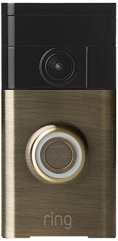 To tolerate places you don’t want to be at:
To tolerate places you don’t want to be at:
Take your glasses off
If you wear contacts or glasses, wear glasses that day. If you are going somewhere that are dreading or think it will be kind of invasive like the dentist, eye doctor, or hair dresser, take your glasses off when you are able. Blurred vision means less visual cues to take in and fully process. It also means less cutting eye contact and less details of others’ facial expressions to hold on to and worry about (cuz you can’t really see it as clear!). When already stressed or on alert mode, taking away even just one stressor can be very beneficial.
Listen to a song you connect with on repeat
Taking your glasses off removes most of the visual cues, but you can take over audio instead. If I’m purposely trying to quiet unwanted sensory or triggers, music can make things worse because now there’s this other background noise that’s super annoying. But if I turn the music loud enough, then it does start to drown everything else out and take over as the primary and only sensory. It also distracts my mind from unwanted spiraling thoughts because you keep gravitating back to the lyrics and melody.
Wear sunglasses
Sunglasses mean no one can see that you’re not making eye contact. Also, less light sensory.
Dress comfortably
The last thing you need is to also be annoyed by your clothes. If sensory overload is going to be a risk, control the sensories that you can.
Think about what you need to say beforehand
Prepare yourself in what to say and how to say it. If your filter has disappeared like mine seems to have, also prepare yourself in what not to say.
At home:
Unscrew lightbulbs for less intense light
If you have multiple lights in a room (I always seem to have a row of them in my bathroom), unscrew one or two. The less blaring of light will feel better.
Install a dimmer on your bedroom light
Less light = less sensory and less stress. You can also have a lamp or two to use instead.
Have gentle white noise
White noise helps me think and I even sleep better. It drowns out other random noises in the house and from outside. I survived sleeping in the dorms in college by running a clip-on fan next to my pillow every night. Otherwise, I am the lightest sleeper in the world and would never have slept at all. Now, I run an air purifier at night and the noise is really comforting. Be careful of the kind of noise, there are some hummings or other things that drive me batshit crazy. But fans seem to be ok.
Use an electronic doorbell
On the spectrum, loud unexpected noises and surprises seriously suck. There’s nothing like the doorbell when I’m not expecting it or anyone coming. Apart from the noise, the surprise of someone being outside my door and the anxiety of it all really sucks and it makes it hard to think. So take away the loud, unexpected noise. You can very easily install and use an electronic door bell (as easy as putting the button up and plugging in the sound box). With an electronic door bell you can: choose where the sound is coming from based on where you put the box, change the sound (some even have little music things), change the volume (be careful, my lowest setting is still freaking loud), change it to where there is no sound (mine has a blue light on the sound box that lights up).
Shop around and make sure you get one that does the things you’d like it to do. Amazon has many options and a great return policy. Reading the reviews also helps with finding something that will work for you.
Technology updates everyday, here are some ideas to get started with:
 Homasy Wireless Doorbell Even the “low” volumes on these little cheap ones seem to be pretty loud and alarming. But since you can plug these in, if your home permits, you can plug them in somewhere where the sound is more muffled… like in a basement or a room you don’t go to. You can also try to cover the sound box or unplug them at times you don’t want to hear any noises. These tend to run around $20 to $30 on Amazon.
Homasy Wireless Doorbell Even the “low” volumes on these little cheap ones seem to be pretty loud and alarming. But since you can plug these in, if your home permits, you can plug them in somewhere where the sound is more muffled… like in a basement or a room you don’t go to. You can also try to cover the sound box or unplug them at times you don’t want to hear any noises. These tend to run around $20 to $30 on Amazon.
 SadoTech Doorbell This is a similar idea to the one above. One thing to keep in mind in purchasing these models… setting them up is going to be a bitch. Have someone else do it for you or prepare yourself. To get the volume right or find the tone you want, you have to go through every option. That means having the blaring noise inches from your face as you’re pressing it. Once set up it’s worth it, but just a warning… These are about $20 on Amazon.
SadoTech Doorbell This is a similar idea to the one above. One thing to keep in mind in purchasing these models… setting them up is going to be a bitch. Have someone else do it for you or prepare yourself. To get the volume right or find the tone you want, you have to go through every option. That means having the blaring noise inches from your face as you’re pressing it. Once set up it’s worth it, but just a warning… These are about $20 on Amazon.
 Jacob Jensen Wireless Doorbell I don’t know what makes this one so much fancier than the other cheaper models… but hey, there’s got to be a reason, right? … This is currently $149 on Amazon.
Jacob Jensen Wireless Doorbell I don’t know what makes this one so much fancier than the other cheaper models… but hey, there’s got to be a reason, right? … This is currently $149 on Amazon.
 Bcomtech Intercom Door System What an anxiety reliever to see who is out there! Often knowing before opening the door takes away a lot of stress. I don’t open the door to salespeople and I have full-on hit the deck and crawled behind a kitchen counter to avoid a Jehovah’s Witness before… Models similar to these seem to range from $80 to over $200 on Amazon.
Bcomtech Intercom Door System What an anxiety reliever to see who is out there! Often knowing before opening the door takes away a lot of stress. I don’t open the door to salespeople and I have full-on hit the deck and crawled behind a kitchen counter to avoid a Jehovah’s Witness before… Models similar to these seem to range from $80 to over $200 on Amazon.

Ring Wifi Enabled Video Doorbell You can have who is at your door go straight to your phone or ipad. No sound at all. If you would like to have a chime for your doorbell, that can be purchased alongside this for $29.99. What is also great about the plug-in chimes, if you are at sensory overload or just don’t want to “handle it,” they unplug and there is no more chime! Read the reviews and be cautious on this model, it seems it is for the tech savvy with many updates. It is currently selling for $197 on Amazon.
Invest in a furry friend
I can never stress the healing power of animals enough.
Decorate your house with lower, softer, muter tones
Less sensory intake = happier Aspie. Set your home and the places you spend the most up for success. If you love home decorating, neutrals and mild grays and whites happen to also make your place look sophisticated, classy, and traditional. Check out Target‘s designed living room below:

Children can still have fun “child-like” rooms while mainting lower stimuli. Not everything has to be bright and over-powering. Check out Target‘s brand Pillowfort. I am obsessed with how they designed these rooms for children. They include splashes of fun color and decoration but the main colors remain mild and calming neutrals.
One thing to notice in all of the rooms is the important of balance. When the walls are mild and colorless, only the bedspreads are busy and draw your eye. When the walls do have color, the bedspreads are muted. Not all color or bright colors are bad, just keep them contained and in moderation to keep stimuli down.
There is a larger incorporation of blues in the Ocean Oasis room, but it is still visually pleasing as they stayed with one color but used different variations of it. The floor and top of the wall also remain neutral, as well as plenty of white in the bedspread.
The Floral Field room uses lower saturations of only two colors, creating a “soft”look. The floor remains neutral as well as maintaining plenty of empty space on the wall. The headboard and bedspread also hold a lot of white.
The Explorer’s Escape room on the bottom is a little bright, but I think it is ok. The blue on the wall is soft. You can also see, when there is color on the wall, the bedspread is neutral. And you still only see two colors that catch your eye. You can even tone this room down by making the red a darker, navy blue. The darker color will still stand out, but like the ocean room, being another saturation of one color will be a bit gentler.
For the nightly wandering child with autism, switch the doorknobs with bathroom doorknobs that lock
This is only if absolutely necessary. It sounds awful locking a child in their bedroom at night… But it is more awful hearing a noise at 3 am in the morning and finding your 6 year old went out the back door and is across the street wandering the neighbor’s yard in the dark because they were curious about something. And more than once.
There are too many deaths of children with autism from wandering. If you notice your child is prone to wander at night, you can unscrew the current doorknob and screw in one with a pop lock just like the ones on bathroom doors (never use any that involve a key). If you do not worry about damage to your walls and door, you can install a loop and hook lock on the outside instead. My nephew’s door was right across from his parents. He knew when he needed something at night (like usually more water), he would knock on his door and his parents would hear him and respond. If you are worried about being able to hear your child, you can show them how to talk through a walkie-talkie (always check batteries) or a baby monitor. If the child’s bedroom is a distance away from any other adults, do not put a lock on the door. There are very real issues of fire safety and being able to get out of the home. Instead, you can invest in motion alarms or door alarms. The sound is meant to alarm neighbors of a burglary and could cause a sensory meltdown in your child. I’m sure there are some quieter ones you can find. But if it comes between either triggering a meltdown or your child suffering physical harm, the meltdown is the lesser of two evils.
If this is something you do not need to worry about, please don’t judge. At 6 years old my nephew had already almost died from getting hit by a car and, at night when he’d leave, he’d leave faster than his parents could respond if there was an alarm in place.
 Here are more safety resources and tools on wandering: Autism Speaks-Safety Tips
Here are more safety resources and tools on wandering: Autism Speaks-Safety Tips
During a meltdown or a bad day:
Wrap yourself tightly in a blanket or towel
Wrap a towel or blanket around yourself and pull tightly. Sometimes a towel works better because there is less “give” and it does not stretch as much. Seriously, it works. Try it. There are a lot of studies as to why. There is even a special machine (that I secretly want) that starts the Aspie’s day out by basically compressing and putting pressure on your body and it has amazing neurological results.
Turn off the lights
See what I did again? Another visual thing you can control and take in less of.
Go to a “safe” room
Ever since I was very young, I found small spaces with little to no stimuli very calming. I would spend hours in the bathtub as a kid and I loved the safety of just our small white bathroom. When stressed out, I would even just camp out in there. I remember in high school being so stressed out about my homework load, I just sat on the bathmat with all of my books and ran the shower (water and the sound of water has always been calming for me) in order to get it all done. Most times, I wouldn’t cry in my bedroom like normal kids, I would cry in small spaces, my bathroom, my closet, behind the couch. There’s something more comforting about an enclosed space.
Put on a movie, read a book, paint, draw, write
If someone is in a sensory meltdown, a movie might not be a good idea. But when I meltdown, it’s more like an overwhelming panic attack. After the initial hit, a distraction can be helpful. Otherwise, sometimes I don’t know if I would ever stop crying. And sometimes just getting calmed down and refocused is all I need to be fine in a matter of minutes.
Make a checklist of each day
Sometimes it’s just about surviving one day to the next. If it’s something that has a foreseeable ending, make a box for each day on a piece of paper. At the end of each day, color the box in. Carry it in your pocket. You can hold it when you get stressed. If there is no distinct end to what is stressing you out, make the checklist go until something you are looking forward to, like a three-day weekend or holiday. I made a checklist until Spring Break, but my cat literally ate it. I forgot it on my counter at home and she chewed it to pieces…! But this time I found, I really only needed it for a couple of days to get past a stressor and then things mellowed out on their own.
Read online websites
Apart from being a distraction, it can be helpful and validating knowing that you are not alone and that there are reasons for your various struggles. All you really need to do is just type in how you’re feeling or what you’re struggling with in the search bar and you usually find, it’s pretty typical. For example, “Asperger’s depression” or “Asperger’s emotional pain” or “Asperger’s rejection.” When you’re feeling down or lonely or isolated, try it. You’ll find it helps. I also have a couple of blogs that connect with how I usually feel or what I am going through. I’ll read through those too.
Start your own blog!
Sometimes if you can name it or call it out, that seems like half the battle.
These are things that I’ve discovered help. If you’ve found other tips, add it to the comments below.








Thank you for your resourceful post. I would add earplugs and earmuffs. If I can suggest a link to a website, let me know. I use silicone earplugs and Pro Ears earmuffs to help me combat intermittent loud noise like children screaming and honking horns in traffic.
LikeLiked by 1 person
Absolutely! What’s your website? 🙂
LikeLiked by 1 person
The website is: http://www.earplugstore.com This is the link to the Earplug Superstore. They offer everything from all kinds of earplugs to white noise to earmuffs for comfortable ear protection when shooting, but they work wonders for everyday noise as well. They have products for babies and children as well.
LikeLike
Reblogged this on Anonymously Autistic and commented:
I stumbled across this amazing blog post today. It was too good not to share! ❤
LikeLike
Reblogged this on .
LikeLike
Incredible list and so many I haven’t thought of. Thank you for sharing this!!!
LikeLike